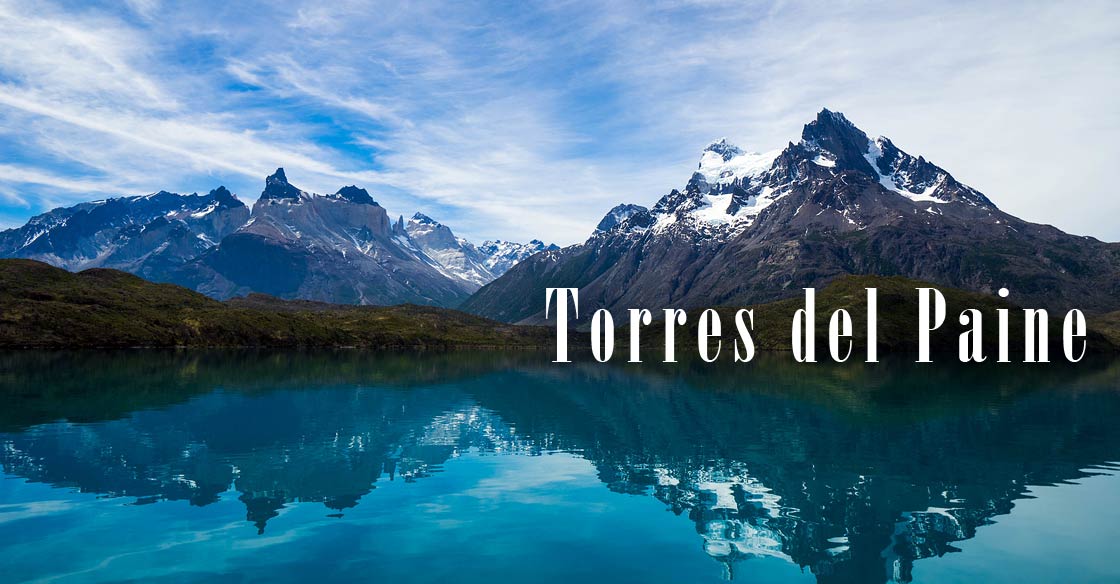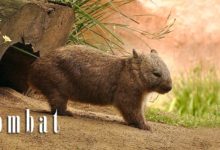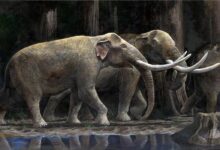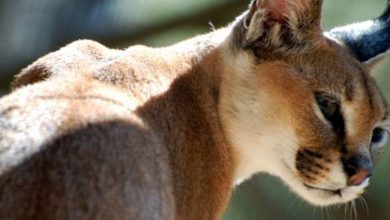Parque Nacional Torres del Paine – park of the blue towers
One of the most beautiful places on Earth, one of the most visited and one of the most distant places. Travel enthusiasts return from there enchanted by the unusual atmosphere of this place. Being a direct observer of mountains resembling hewn pillars, almost neon blue lakes, grassy valleys and vast ice sheets can awaken in man undiscovered layers of sensitivity to beauty. And we will try to present this beauty with simple words and meaningful photos.
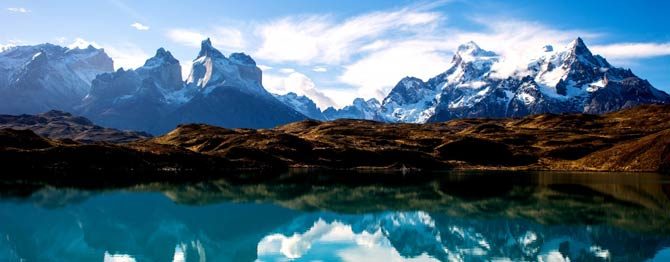
Establishment of the Park
In May 1959 the site was named Parque Nacional de Turismo Lago Grey (Grey Lake National Tourism Park). In April 1970, the area was increased by 11,000 ha. The extended area was “renamed” Torres del Paine National Park (Spanish: Parque Nacional Torres del Paine). Currently, it covers an area of 181,414 ha.
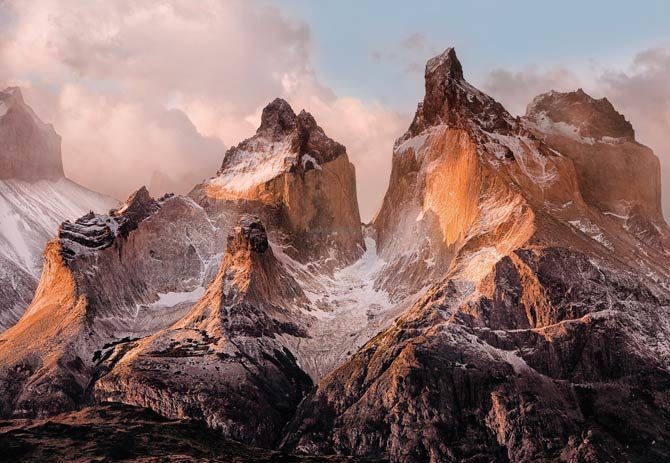
Location
The park is located in southern Chile, and more precisely in Patagonia – a region located in the southern tip of South America, lying in Chile and Argentina.
The city of Puerto Natales is located 112 km (70 mi) from the Park, and Punta Arenas is approx. 312 km (194 mi) away.
Torres del Paine is directly bordered by two other parks: Bernardo O’Higgins National Park and Los Glaciares National Park (Parque Nacional Los Glaciares), located in Argentina.

Climate
This region of the world is under the influence of a temperate climate. Rainfall is cold and there are no dry seasons. Summer is not the warmest – then the temperature does not exceed 16 °C (61 °F) (almost only in January – the warmest month). Winters are cold (for this climate) – the average temperature in July is + 5 °C (41 °F), while an average low temperature is −3 °C (27 °F).
The best time to visit PN Torres del Paine is between September and April, i.e. during spring, summer and early autumn, which occur in the southern hemisphere at a different time than in the northern hemisphere. The summer days are very long and pleasant, but outside this period the weather conditions in the Park are unfavorable. During the winter, the days are short – they last only a few hours.
The coldest months are March and April. Then the rainfall is the most abundant.

Fauna and Flora
Most of the Park’s surface is covered with characteristic thickets, known as pre-Andean shrubs. We meet them on plains and plateaus. We admire moist deciduous forests – lenga forests – composed mainly of trees of the species Nothofagus pumilio. Forests and thickets alternate with Patagonian steppes and desert areas.
The species characteristic of the Park include:
- Lathyrus nervosus, deceptively reminiscent of lavender
- Embothirium coccineum – evergreen tree, blooming with red flowers
- Armeria Marítima – a perennial with pink flowers, having healing properties
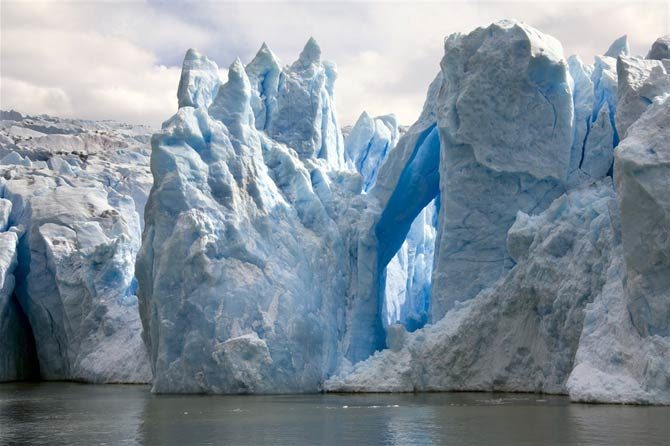
Many species of mammals live in Torres del Paine. The largest and most dangerous is puma, called the mountain lion. We cannot forget about:
- South Andean deer (Hippocamelus bisulcus) – a relative of the deer
- South American foxes (Lycalopex) – canines, resembling a small wolfs
- Andes skunk (Conepatus chinga) – a predatory mammal from the skunk family whose greatest weapon is the stench
Birds are also worth mentioning:
- Andean condor (Vultur gryphus) – one of the largest flying birds and at the same time one of the highest-flying birds in the modern world
- Black-chested buzzard-eagle (Geranoaetus melanoleucus) – a bird of prey with silvery plumage
- Chilean flamingo (Phoenicopterus chilensis) – a pink wading bird, considered by many to be a symbol of the exotic
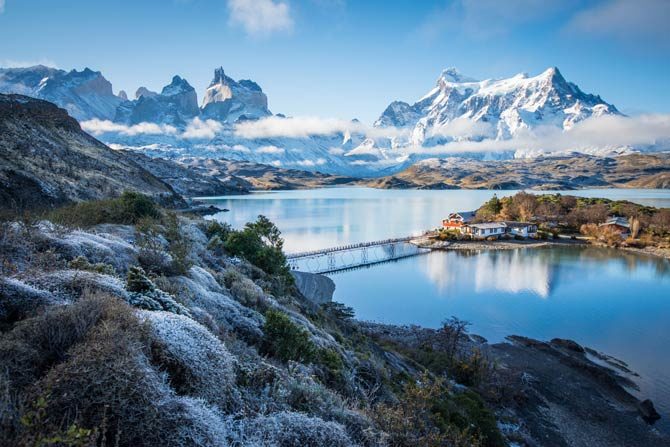
The heart of the park
The central point of Torres del Paine National Park is the Paine massif (Cordillera del Paine), which is part of the Andes. The granite peaks of Paine resemble spires (towers), reaching a maximum height of over 2,800 meters (9186 ft) above sea level. They rise above the Patagonian steppes, creating almost fabulous views.
There are 4 picturesque valleys between the peaks:
- French Valley – Valle del Francés, its main point is a basin formed by high cliffs
- Valley of Silence – Valle del Silencio, the hallmark of which are huge granite walls: Cerro Escudo (Shield Mountain) and Cerro Fortaleza
- Valle Ascencio is the way to the Torres del Paine viewpoint, located on the shores of a beautiful lake
- Valle Bader
The highest peak of the massif is Paine Grande, which is 2,884 m (9,462 ft) above sea level.

Ice Field
A large part of the Park is the ice sheet, called the Southern Patagonian Ice Field. It includes glaciers:
- Dickson
- Grey
- Zapata
- Tyndall
The Southern Patagonian Ice Field is the 3rd largest ice field in the world, after Greenland and Antarctica. It is the world’s second-largest contiguous extrapolar ice field.
It covers an area of 16,800 km2 (6,500 sq mi) and is mostly located in Chile. It is distributed among several national parks, so only a certain part of it is within the boundaries of the Torres del Paine National Park.
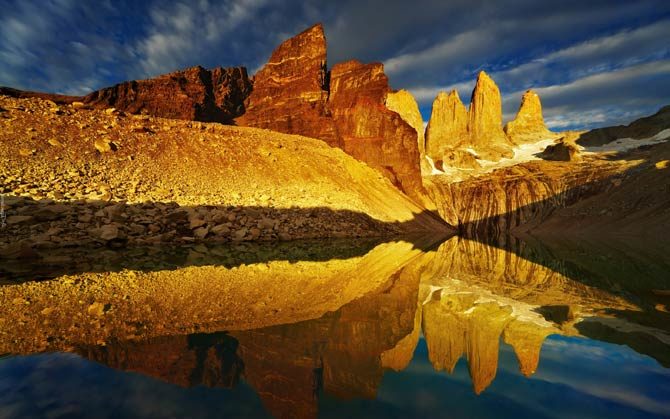
Turquoise lakes
The lakes in the National Park are of exceptional beauty. They are characterized by the vividness of the colors – this is the result of the so-called rock flour (fine rock particles). The group of “park” lakes includes:
- Dickson Lake
- Nordenskjöld Lake (named after the Swedish discoverer of this reservoir – Otto Nordenskjöld)
- Lake Pehoé
- Sarmiento Lake
- Grey Lake
- Del Toro Lake (only partially located in the National Park)
The main river that flows through the Park is the Paine River (Río Paine), which flows into Del Toro Lake. Its main source is Dickson Lake.
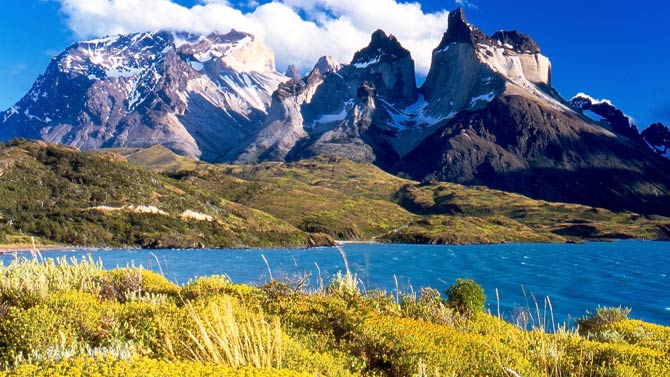
Detailed data
Torres del Paine National Park
- Spanish name: Parque Nacional Torres del Paine
- Area: 181,414 ha (448,280 acres)
- Established: May 13, 1959
- Visitors: 304,947 (in 2019)
- Main attractions:
- Paine Massif – high granite peaks, called towers; the most famous are three towers, called Towers of Paine (Spanish: Torres del Paine) and Paine Horns:
- South Tower – 2,500 m (8,200ft) above sea level
- Central Tower – 2,460 m (8,100 feet) above sea level
- North Tower – 2,260 m (7,415 ft) above sea level.
- Paine Massif – high granite peaks, called towers; the most famous are three towers, called Towers of Paine (Spanish: Torres del Paine) and Paine Horns:
- Valleys
- Lakes
- Vast Ice Field – Southern Patagonian Ice Field
- Records:
- One of the largest national parks in Chile
- One of the largest ice fields in the world: the Southern Patagonian Ice Field – area: 16,800 km2 (6,500 sq mi).
- The highest peak of the Paine massif: Cerro Paine Grande – reaches a height of 2,884 m (9,462 ft) above sea level.
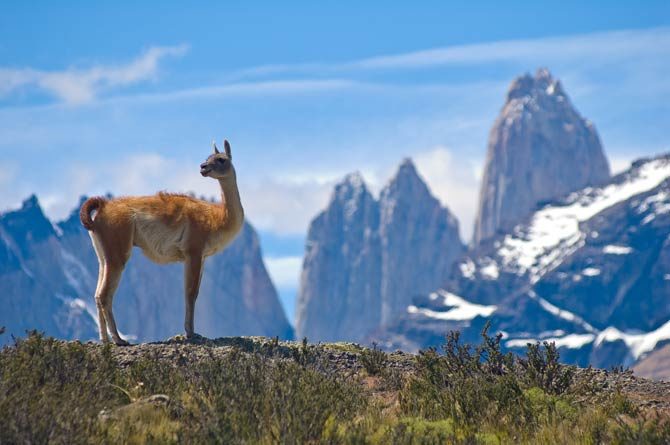
Torres del Paine National Park – interesting facts
- In the Tehuelche (Aonikenk) language, the name Torres del Paine means “Heavenly Towers”. It refers to the granite towers described in the article. Their appearance is reminiscent of tall buildings. Observing them from a distance, however, we can see that they acquire a bluish shade.
- The park is visited annually by about 300,000 tourists, of which over 50% are foreigners.
- In order to reach some places in the Park, you must hire a certified guide.
- One of the most common species of mammals in the Park is guanaco (Lama guanicoe) – a cousin of camels and llamas.
- Torres del Paine National Park has been named the 5th most beautiful place in the world by National Geographic.


